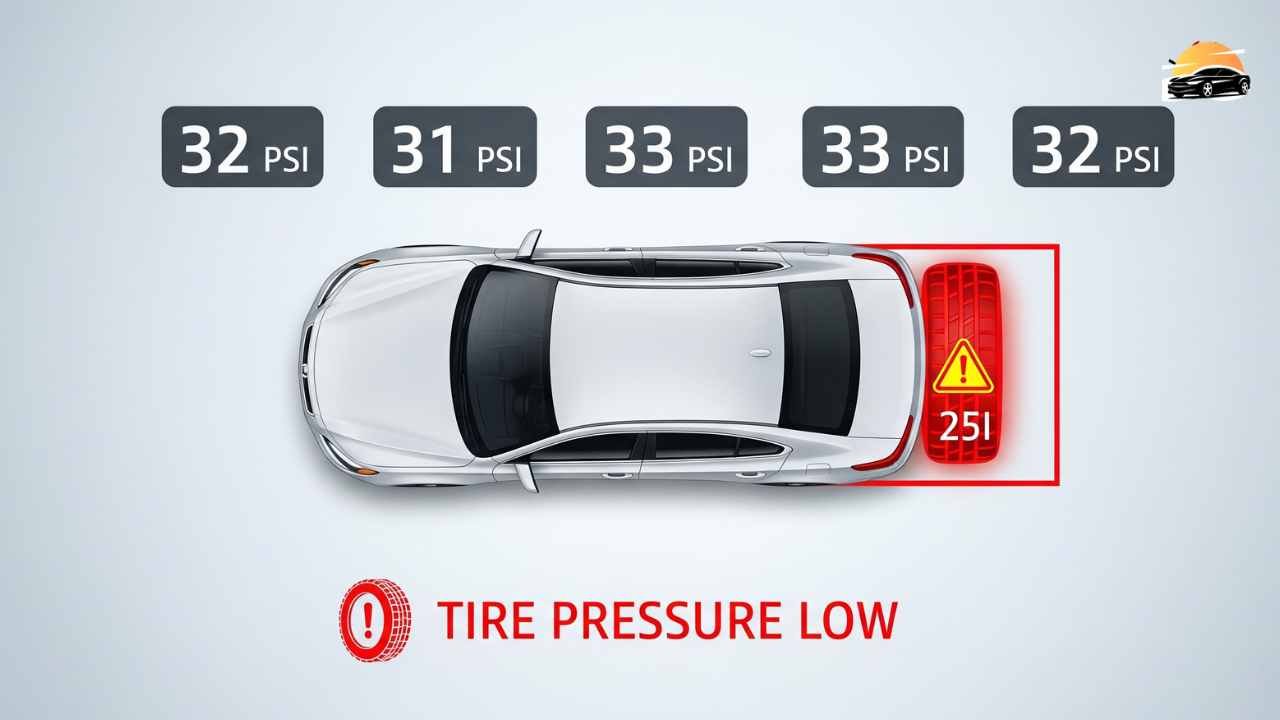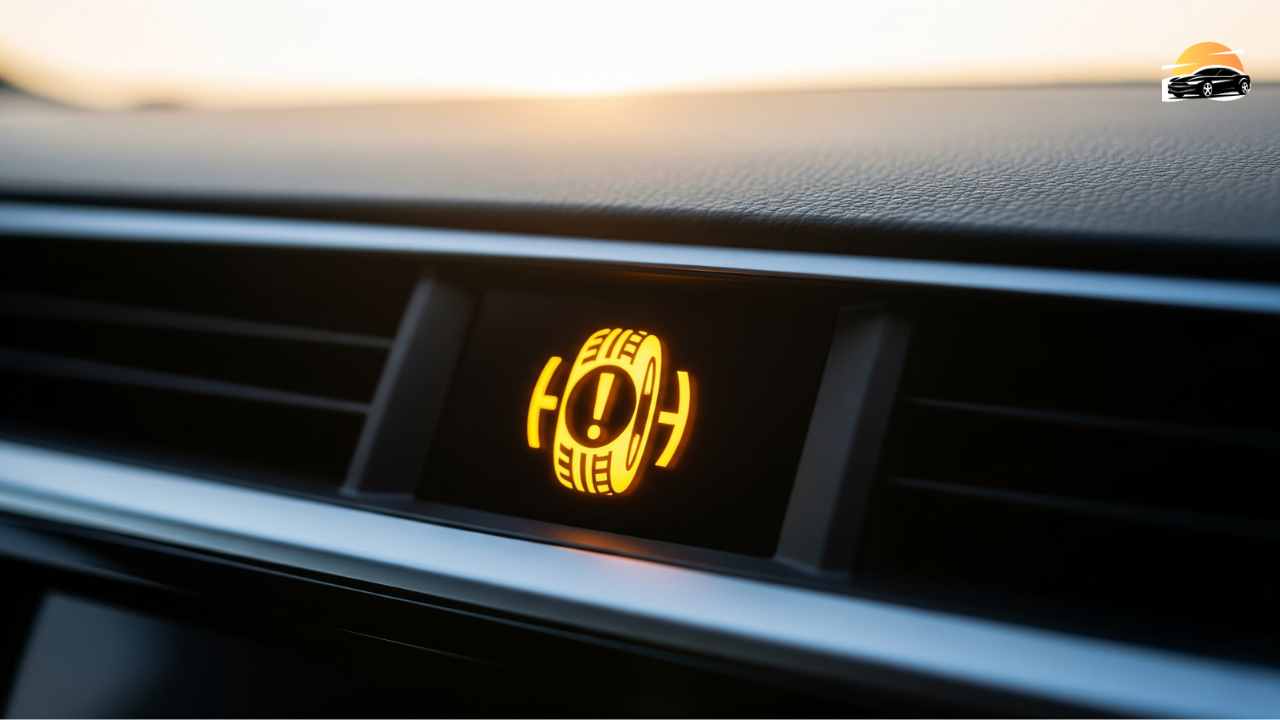TPMS, short for Tire Pressure Monitoring System, is a built-in electronic safety feature in your vehicle. It relies on sensors to measure the air pressure inside your tires and warns you if the pressure drops too low. When there’s a problem, you’ll see a dashboard light, usually shaped like a horseshoe with an exclamation mark inside. This alert helps you avoid unsafe driving conditions, reduced fuel efficiency, faster tire wear, and the risk of tire failure.
Did you know that more than 23% of older vehicles without a TPMS hit the road with at least one severely underinflated tire, increasing the risk of blowouts and crashes? Yet, since the US introduced mandatory tire pressure monitoring systems in 2007 and Europe followed suit in 2014, the number of cars with TPMS—and the promises it offers—has skyrocketed. In fact, Continental and other mega-suppliers now compete fiercely to dominate a market forecasted to reach almost $42.3 billion globally by 2034.
This surge in smart tire technology isn’t just a perk for new car buyers. It impacts investors banking on vehicle safety tech, consumers worried about hidden costs, and auto employees racing to keep up with changing regulations. But here’s the thing: not everyone is convinced that TPMS has solved all tire safety problems. Some insiders claim that compliance fatigue and sensor failures muddy the waters, leaving drivers wondering if their dashboard warning is real—or a false alarm.
The Data
According to the National Highway Traffic Safety Administration (NHTSA), vehicles equipped with TPMS saw a 55.6% drop in the likelihood of running severely underinflated tires compared to vehicles without TPMS. The system also led to a 30.7% reduction in severe overinflation incidents, which can cause unsafe handling and rapid tire wear. And the numbers get better: during 2011 alone, TPMS was estimated to save about $511 million in US fuel costs thanks to improved tire pressure monitoring.
On the global stage, the TPMS market was worth $9.8 billion in 2025 and is projected to hit $42.3 billion by 2034, driven by stricter safety mandates in North America, Europe, and Asia. Direct TPMS systems, favored for their real-time accuracy, now corner over 63% of market share, and smart sensors are being adopted rapidly in electric vehicles for preserving battery range. Case studies show that TPMS adoption consistently correlates with reduced tire-related accidents and lower insurance premiums for compliant vehicles.
What Does TPMS Mean on a Car: Step-By-Step Guide

How TPMS Works
TPMS is designed to alert drivers immediately if tire pressure drops below safe levels. The system uses sensors installed inside each tire (direct TPMS) or operates via the anti-lock braking system sensors (indirect TPMS) to detect changes in speed and pressure. When an issue is detected, the system triggers a warning light—usually a horseshoe-shaped icon with an exclamation point—on the dashboard. This means at least one tire is underinflated, and action is needed.
Step-by-step:
TPMS sensors constantly measure tire pressure in real time.
When pressure deviates below the manufacturer’s recommended value, the TPMS control module sends an alert to the dashboard.
Drivers are prompted to check and inflate their tires or visit a service center. If ignored, risks include poor handling, increased fuel use, and possible blowouts.
Not every TPMS works the same. Direct systems use built-in sensors to report precise readings, while indirect systems estimate pressure using wheel rotation data. The owner’s manual details which system is in place and how to maintain it.
The Sensors and Tech Behind It
Leading manufacturers like Continental have advanced the technology further, miniaturizing sensors and improving battery life for long-term reliability. Many systems now integrate with smartphone apps and vehicle telematics, so drivers and fleets receive instant updates—even logging tire health over time for fleets and EVs.
Some aftermarket TPMS products even work with bicycle tires or trailers, connecting directly to mobile devices. The transition from basic pressure warnings to smart data-rich diagnostics marks a revolution in how drivers manage vehicle safety.
Why TPMS Matters for Drivers
Underinflated tires increase the risk of blowouts, poor braking, and hydroplaning. Over time, unchecked tire pressure means more frequent replacements and higher fuel costs. TPMS guarantees that drivers,
Reduce daily risks on the road.
Save on fuel (a typical car saves 9.32 gallons annually thanks to TPMS).
Extend tire life with fewer emergency replacements.
Prevent expensive insurance or recall issues tied to non-compliance.
Regular maintenance—replacing old sensors and following TPMS alerts—is critical. Malfunctioning systems can still pop up in used cars, so buyers need to verify TPMS integrity before purchase.
Compliance and Costs
Ignoring TPMS warnings or using malfunctioning sensors can mean fines, penalties, and even recall orders for manufacturers. Some insurers may deny accident claims for cars without compliant TPMS, placing extra liability on owners. Commercial fleet managers are now required to retroactively install TPMS on old vehicles to meet safety standards and avoid legal trouble.
That said, TPMS isn’t immune to criticism. Drivers report false warnings when temperatures shift quickly, and some claim sensor batteries die sooner than advertised—a weak link in otherwise robust safety tech. Of course, this smells like overengineering, but even critics concede the overall accident reduction record.
The People
“A former OEM executive told Forbes, ‘TPMS was game-changing—but manufacturers underestimated just how confused consumers would be about model differences and sensor lifetimes. Too many drivers still ignore the dashboard alert, treating it as background noise.’”
An automotive technician for a leading dealership shared, “Every week, we see drivers come in worried by the horseshoe light. Nine times out of ten, it’s an easy fix. But people don’t realize that keeping tires properly inflated is not just about comfort—it’s critical for preventing catastrophic failures.”
Industry analysts highlight the rapid evolution of TPMS, particularly within the electric vehicle segment, where correct tire pressure is crucial for battery performance and safe regenerative braking. This technology is considered foundational as EV fleet sizes grow, with telematics and predictive diagnostics integrating TPMS data for smarter maintenance schedules.
The Fallout
The real-world impact? Tire blowouts and accidents caused by underinflated tires have dropped precipitously in markets where TPMS compliance is high. Regulatory mandates have forced manufacturers and fleet managers to up their game, investing in both hardware and cloud-based security to prevent data spoofing and tampering.
Insurance companies now offer lower premiums for vehicles with properly maintained TPMS, incentivizing owners to keep systems up to date. Still, survey data from 2017 found that 54% of cars in the EU lacked TPMS—a stat that shows lingering gaps, likely because retrofitting old cars is slow, expensive, and sometimes technically challenging. Fleet managers, meanwhile, must navigate complex regulatory compliance or face costly penalties and denied claims.
The aftermarket sector is booming, too, with millions of older vehicles now being retrofitted. However, sensor drift and skipped maintenance mean even new tech isn’t foolproof. Some analysts warn that as vehicles become more autonomous, TPMS reliability will move from a peripheral concern to a critical infrastructure, as failures could undermine public trust in smart cars.
Closing Thought
So, will the next leap in TPMS engineering finally eliminate false positives—and make ignoring that dashboard horseshoe a thing of the past? Or will complacency and patchy compliance keep tire safety on a knife-edge, even as the tech goes mainstream? Only time (and a healthy skepticism of corporate promises) will tell.











